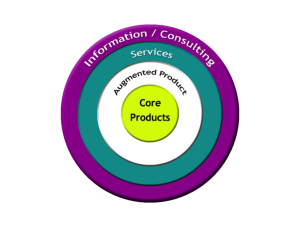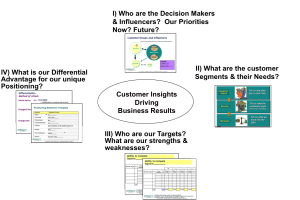Why Every Marketer Should Study Lean Startup Principles
The Concepts Will Help Any Product Manager – Even Those Who Don’t Believe That LEAN Principles Apply To Them
Competitors can duplicate any product advantage you have incredibly quickly. This means that you must innovate constantly in order to maintain a competitive advantage.
While Lean manufacturing methodologies have been around awhile, Lean startup principles are a solution to the problem of high failure rates for new innovations. Startups are embracing the methodology that, according to author and expert Steve Blank “…favors experimentation over elaborate planning, customer feedback over intuition, and iterative design over traditional ‘big design up front’ development.”
But large companies must also constantly innovate to remain viable – or risk being overtaken tomorrow by a company that may be operating from a garage today (see Dell, Apple, Amazon, Alibaba, etc.)
The following summarizes some insights we’ve gained from studying Lean startup concepts.
- Lean Startup principles should guide most product innovations, but all marketing plans
Traditional product plans help companies achieve goals and avoid bumps in the road. This approach of avoiding missteps made sense in an era when production costs where high and product iterations were expensive.
Now, new technologies like 3D printing have radically reduced the costs of prototyping new product features. This allows the Lean startup – or the established company employing a Lean startup approach — to find the inevitable faults in a product right away, through seeking early and intense customer feedback.
Here’s the rub: in some highly-regulated or high-risk industries, continuous product iterations are impractical and frowned upon. Frequent product updates can be costly when there are significant product validation, employee training and certification requirements. Customers in these circumstances have been heard to say, “Don’t give me a product half developed” or “We are not your guinea pigs” or “Come back when the product is fully functional and not half-baked.”
If this applies to you, completely abandoning Lean Startup principles would be a big mistake. Why? Because seeking early and intense customer feedback on potential marketing strategies is always a best practice.
So what if you can’t iterate your core product according to a Lean startup approach – what about the packaging, services, or information that surround the core product?

There’s no reason not to be constantly generating new “beyond the core product” ideas and in constant dialogue with customers about these potential differentiators. Similar to how 3D printing is lowering the cost of testing product iterations, technology-driven approaches like online bulletin boards are lowering the cost of gaining access to continuous customer feedback.
- Many Lean startup strategies are too narrowly focused when it comes to innovation
Physical products are often the focal point of Lean startup strategies. But innovation can come from many parts of the marketing process – from creative routes to market, to targeting new segments, to designing original packaging concepts, to novel positioning and pricing strategies, and more.
Looking at these other sources of innovation can provide additional hypotheses for testing by Lean startup practitioners. Just like product innovations, these other types of innovations can be run through the rest of the Lean startup model for feedback, adjustment, etc.
For example, when Snapchat was launched in 2011, it was careful not position itself as a “sexting” app. Snapchat’s messaging service allows users to send photos, videos and texts to recipients, who must view them right away because they disappear in 1- 10 seconds.
While the mainstream media tried to frame it as such, data showed that 80% of Snaps were sent during the day—the school day specifically.
This suggested that the Snapchat positioning and value proposition might be less about sex and more about freedom of many types of expression without the public ramifications that would come from more “permanent” forms of communication.
Based on this data and hypothesis, Snapchat conducted testing and refinement of this positioning angle – in the same way product features and functions can be tested under Lean startup principles. They found that this position communicated the app’s value proposition better and to a wider audience than a sexting-based message could deliver. In fact, this approach was one of the keys to Snapchat’s rise to a multi-billion dollar valuation.
Here are some other potential areas to look for innovations outside of the product realm:

- Lean startup is not “shooting from the hip!” A hypothesis is necessary
We suspect that many who love the idea of the Lean startup view themselves as action-oriented “doers.” This is a helpful trait, but a look at the Lean startup’s business model canvas reveals that a hypothesis is necessary to get started. One must have ideas about partners, resources, activities, value propositions, customer relationships and more to test.
Of course, the idea is to not to belabor the strategy, but quickly get a “close enough” hypothesis and start the feedback gathering process. To that point, a process for getting there rapidly would include the following:
- Frameworks to rapidly generate a ideas to test regarding key stakeholders, emerging customer needs and satisfaction with existing solutions, and direct and indirect competitors
- Tools to develop and prioritize whole product innovations – not just core product iterations
- Potential segmentation, targeting and positioning strategies in order to define test populations, messaging and business models
- A testing plan that details how rapid customer feedback will be generated and measured, and potential “pivots” if feedback is not favorable.
Why wouldn’t an established company embrace these principles?
Many thought leaders are extolling the benefits of Lean startup principles for even the largest of enterprises. We agree with them.
Why not? Barriers to entry in most industries have evaporated. Competitors are coming from everywhere.
The one thing every business needs is customers. Lean startup principles, when applied to marketing, go well beyond product iterations.
It considers the whole product, new routes to markets, new targets, new communication methods, new positioning and pricing strategies and more in generating customer experience hypotheses for rapid and constant feedback. This sounds like a recipe for success in any sized organization.

 Tom Spitale
Tom Spitale